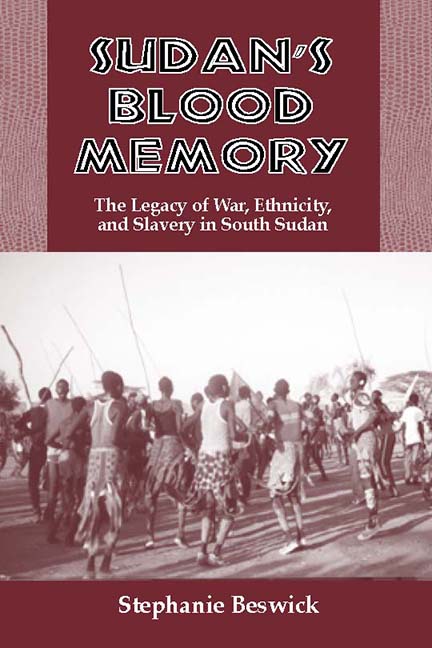Book contents
- Frontmatter
- Dedication
- Contents
- Maps
- Preface
- Acknowledgments
- A Note on Orthography and Languages
- A Note on Sources
- Map
- 1 Introduction
- 2 Geography and Brief History of Sudan
- 3 The Changing Nilotic Frontier
- The Ethno-Historical Formation of Southern Sudan
- The Ascendancy of the Dinka in Southern Sudan
- Foreign Intrusion and Its Consequences
- 15 Eighteenth-Century Slavers and Traders
- 16 Nilotic Chaos: Dinka, Nuer, Atwot, and Anyuak
- 17 Politics and Stratification among Stateless Peoples
- 18 Summary and History
- 19 Legacy of the Precolonial Era
- Notes
- Glossary
- Bibliography
- Index
15 - Eighteenth-Century Slavers and Traders
from Foreign Intrusion and Its Consequences
Published online by Cambridge University Press: 23 July 2019
- Frontmatter
- Dedication
- Contents
- Maps
- Preface
- Acknowledgments
- A Note on Orthography and Languages
- A Note on Sources
- Map
- 1 Introduction
- 2 Geography and Brief History of Sudan
- 3 The Changing Nilotic Frontier
- The Ethno-Historical Formation of Southern Sudan
- The Ascendancy of the Dinka in Southern Sudan
- Foreign Intrusion and Its Consequences
- 15 Eighteenth-Century Slavers and Traders
- 16 Nilotic Chaos: Dinka, Nuer, Atwot, and Anyuak
- 17 Politics and Stratification among Stateless Peoples
- 18 Summary and History
- 19 Legacy of the Precolonial Era
- Notes
- Glossary
- Bibliography
- Index
Summary
“Slavery probably came to the Malwal [Dinka] area sooner than elsewhere [in Dinkaland] because of our geographic continuity with the north.”
Lawrence Lual Lual Akuey, Malwal DinkaLittle is formally recorded of eighteenth-century Southern Sudanese history, yet it was a critical period. It began with the intrusion of Islamic slave raiders from the north. Ironically, the event giving birth to this new era of intense strife had taken place a generation or more earlier when the former residents, the Luel, were forced off their land by the expanding Dinka arriving from the southeast.
The Dinka Wars with the Luel
Prior to the Dinka arrival the mound-building Luel had inhabited many parts of the Southern Sudan, particularly west of the Nile. Scholars believe them to be closely related to the Daigu (Daju or Dago) and the Beigi, who now reside in Kordofan and Darfur provinces in what is now west-central Sudan. The Dinka remembered them as dwarfs, light in color and short and stocky in appearance. They were armed with bows, arrows and poisoned hand darts and possessed many sheep and cattle of the non-humped variety.
The Shilluk-Luo had preceded the Dinka and been militarily beaten by the Luel until they collaborated with the newly arrived Rek Dinka and jointly attacked these hostile peoples—this time, successfully. Shortly thereafter the Malwal and Western Twic Dinka followed suit. From this point on many of the Luel were forced to live far in the north beyond the Kir/ Bahr el-Arab River in ecologically harsher regions. They were not to rest long, however, for yet another series of Dinka clans, who later collectively came to be known as the Western Ngok, migrated into their territory. These folk arrived in the region from the east and settled onto the land known today as southwest Kordofan. The Abyor clan of the Western Ngok warred with the Luel and forced some from the land while other small pockets of these people remained. Soon, however, the Dinka would encounter another militarily powerful people from the north.
- Type
- Chapter
- Information
- Sudan's Blood Memory , pp. 153 - 163Publisher: Boydell & BrewerPrint publication year: 2004



